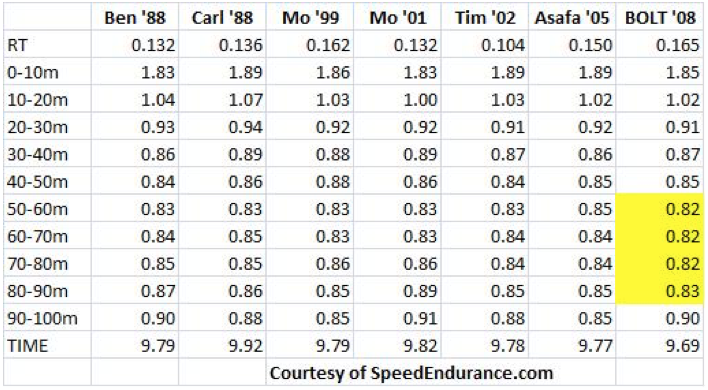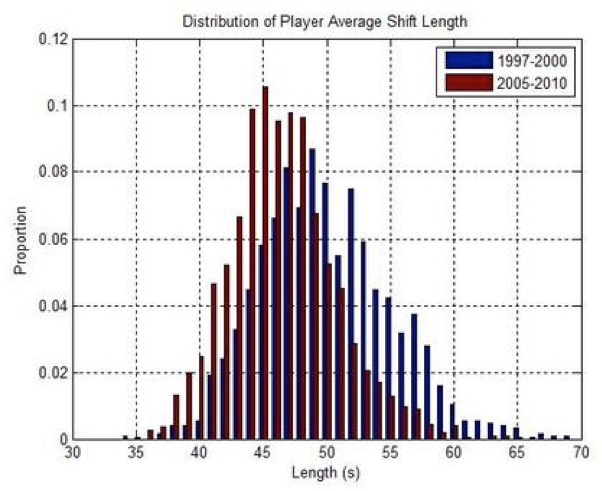
Every year when winter arrives, thousands of collegiate football players throughout the country awaken from their slumbers to begin conditioning for the next season. While there are some great things that can go on during this time period, there are also many times that football coaches run their guys into the ground with months to go before the players even see the competitive field.
I've been included in programs in which we run once a week during this time of the year, and I've also been on staffs that run three times during this time. Clearly, there are many ways to approach the conditioning season, and I don't know if any one way is best. I think the best program at this time of the year is the program that works for you and your team. With that said, I'll give you some thoughts that I have and hopefully make you question some of what you're doing or what you've done in the past.
Understand the Energy Systems
The first thing we must do in order to train these athletes is to understand the energy systems in which they're spending their time and how these energy systems feed off each other. The first energy system is the ATP/PC (phosphagen) energy system. I prefer 'ATP/PC' and will use that from here on out because it actually tells us the source of energy we're drawing from.
RECENT: A Letter to the Next Me
To understand this system, simply look at elite level sprinters. After 60 meters, all sprinters either begin decelerating or, at best, maintain their current speed. Either way, the runner goes from ATP/PC as the dominant energy source to glycolysis (which we will get into in a minute). But the take-home lesson is that after six seconds of work, the runner slows down whether he wants to or not.
To illustrate this point, look at the splits for some of the greatest sprinters of all time:
Notice that everyone began to decelerate at or around that 60-meter point. Bolt maintained speed better than the rest, but even he didn't accelerate after 60 meters, and he began deceleration around 80 meters. It's possible that Bolt began decelerating at around 80 meters because back in 2008, he was still in his prime and tended to do a little celebrating at the end of his races. Even if this is the case, it's clear that only one man was able to maintain his speed.
The second energy system is glycolysis and it lasts about 45 seconds. Many books state that it lasts up to two minutes, and while I agree that there is some truth to that, I want to show some real-world examples as to why I use the 45-second rule of thumb. Two sports that I believe show how this energy system works are basketball and hockey. Many see these two sports as complete opposites of one another, but from a bioenergetic standpoint, I think they're more similar than they appear to be.
The graph below shows average shift times in a hockey game. It also compares this data based on the decade. So it shows that shifts are, on average, under 50 seconds and have actually dropped, on average, over the last decade. For all my hockey fan readers, what happens when your team is stuck on the ice for longer than a minute? Bad things.
Now, let’s look at basketball. I had a hard time finding concrete data on how long the ball stays in play during a basketball game, so I took two stopwatches to a few games. One watch began when the ball entered play and ran until the play stopped (buckets within bounds didn’t count; I only wanted true stoppage of play). The second stopwatch was set to one specific player. I started it every time the player made an explosive movement. This wasn't an exact science because I started and stopped the watch for a jump, but this gave me a general idea as to how much explosive work the player was doing. I also kept a running total of how many explosive movements the athlete I was watching made. I found that no athlete had more than eight explosive movements on any given play and that generally, the athletes were under six seconds of total explosive movement on any given play. In addition, the ball rarely stayed in play for more than one minute without some sort of stoppage. Most of the time, if it was in play that long, an unforced error would occur (i.e. foul, poor pass, poor ball handling). This reinforced the idea that after 45 seconds, we become fatigued and can no longer move skillfully. My assumption was that this was due to lactate (I realize that there could also be a mental factor here as well).
The aerobic energy system is the much-maligned system of the human body. We've all heard coaches say "let’s not be marathon runners" so don’t “slow our athletes down.” Yet we think about issues such as mitochondrial density and VO2 max.
Where this system comes into play is in the fact that the more well-conditioned the athlete, the more work the athlete can do. The more quality work the athlete can do, the greater the athlete’s chance for success. For those meatheads like me, we can just call this GPP. Each sport obviously needs differing levels of aerobic work, but don’t be afraid of low-level aerobic work for recovery as well as for improving the athlete's ability to move. When specifically dealing with football, these athletes don't need to be marathon runners, but if they're in better shape, they'll be able to run more effective plays throughout the game.
Tying It All Together
Knowing all this information, how can we now effectively train our athletes for the upcoming season? We often have great ideas, but we sometimes use them ineffectively. Before anyone freaks out, yes, Charlie Francis was smarter than I am, and yes, I've read his stuff and respect him very much. With that said, I've seen too many coaches use tempo running in an ineffective manner. Many of my young staff come in with great ideas and tons of book knowledge but little coaching experience. I see these young coaches tempo running athletes who have never sprinted and are in terrible shape. To me, this is the same as sticking to a true Westside Barbell split for the freshman athlete who is weak and doesn’t yet know how to create force. Think about it this way — if you tell an athlete to run at 60 percent and he doesn't even truly know what 100 percent is, how can he maintain 60 percent?
RELATED: Why You Should Use the Conjugate Method for Your Athletes
How would I change this? I would do something that many will freak out about. I would run them on a 300-yard shuttle. Why? Because it's easy to show improvements. It makes the athletes accelerate and attempt to sprint. If you had your athlete finish each running session with one 300-yard shuttle three times a week for three weeks and you truly believe that this would kill their gains, I’m sorry, but you need to look at what you’re doing. I wouldn't say that this is perfect for all athletes, but if I’m dealing with 70 off-season football players from the ages of 18 to 21, I think this would be a fine way to track improvement.
In addition to being simple to show improvement, we all know that glycolysis will get you in shape. How long does one 300-yard shuttle take? About 45 seconds to one minute. Ask any track athlete what the hardest event is. The answer will tend to be the 400 because it's the longest run that is an all-out effort and it's very glycolytic. As I've shown from the examples in the sports above, this is where the athlete tends to run out of gas.
Complex Training
In addition to running events similar to the 300, we can train these athletes by doing some complex or contrast work. Instead of tempo runs, we can have the athlete do five explosive medicine ball throws followed by a sprint and then battling ropes for 30 seconds. In this scenario, the athlete is still moving explosively, but he's getting the training effect of the glycolytic energy system without destroying himself.
Sleds, Steps, and Prowlers
How about doing work for time so that the eccentric load on the athlete is removed? Medicine ball throws, battling ropes, sleds, steps, and Prowler work can all be done with energy system training in mind. For example, we've had our athletes sprint the Prowler for 10 yards with five to seven teammates trailing behind. Do this nonstop and rotate athletes for 20 minutes straight or for a certain amount of yardage that you deem appropriate.
We also have the athletes perform Prowler suicides. My main man Harry Selkow gave me this one. Sprint the Prowler on high handles for five yards and bring it back on the low handles. Then sprint for 10 yards the same way and finish with 15 yards. Trust me — it isn't fun. Rest for two to three minutes and repeat. Get five sets in and you're in decent shape.
Conclusion
With everything I wrote here, I know some people will say, "No, we have to worry about the athletes' preparedness and not overstress the athletes." I'm not in any way attacking that science. I'm saying that we must first stress the athlete before we worry about that athlete's recovery. A trend that concerns me is coaches who are more worried about rest when the athlete has yet to even be stressed.












